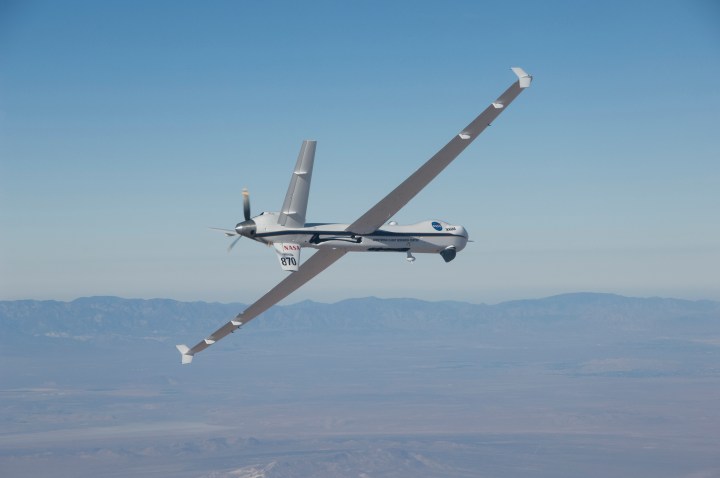
“The weather information can benefit any kind of commercial or military aircraft and it could have uses for unmanned aircraft systems in the future,” said Ed Diks, Ikhana deputy project manager. The probe relies upon Panasonic Tropospheric Airborne Meteorological Data Reporting, or TAMDAR, and while this technology in and of itself is nothing new (NQWQ said it’s been riding along on commercial airliners for more than 12 years), the TAMDAR Edge system is a much smaller, lighter weight version of the original technology.
And that’s partially why it can fly on an unmanned craft like the Ikhana.
Indeed, Ikhama and TAMDAR Edge may have a mutually beneficial relationship, according to pilot Hernan Posada. “Weather is vital to our safe operation of this aircraft,” Posada noted. “We adhere to strict airspace rules and manufacturer limits and seeing weather and being able to avoid it is a plus.”
We’ll soon be able to see exactly how good the probe really is when TAMDAR and a communications satellite network join forces to provide pilots with real-time weather, and separately, help better weather forecasting models. The TAMDAR Edge probe is capable of collecting a veritable treasure trove of meteorological information, including winds aloft, temperature, humidity, pressure, icing presence, and more.
And aside from the sheer amount of real-time information TAMDAR Edge can collect, its mobility could also prove beneficial, especially in remote areas where gathering data is a bit trickier. “We have a lot of data at LAX (Los Angeles International Airport),” explained Scott Wiley, a NASA Armstrong meteorologist. “We have a lot of data in Seattle. We have a lot of data in Chicago. However, we don’t have a lot of data in remote areas … We are filling the data gaps with TAMDAR to improve the weather models and forecasts. It’s a tremendous benefit to have this data.”
Editors' Recommendations
- Intel processors may get a lot more expensive, giving AMD an edge
- Microsoft Edge gets a big update with new themes, history and tab sync, and more


